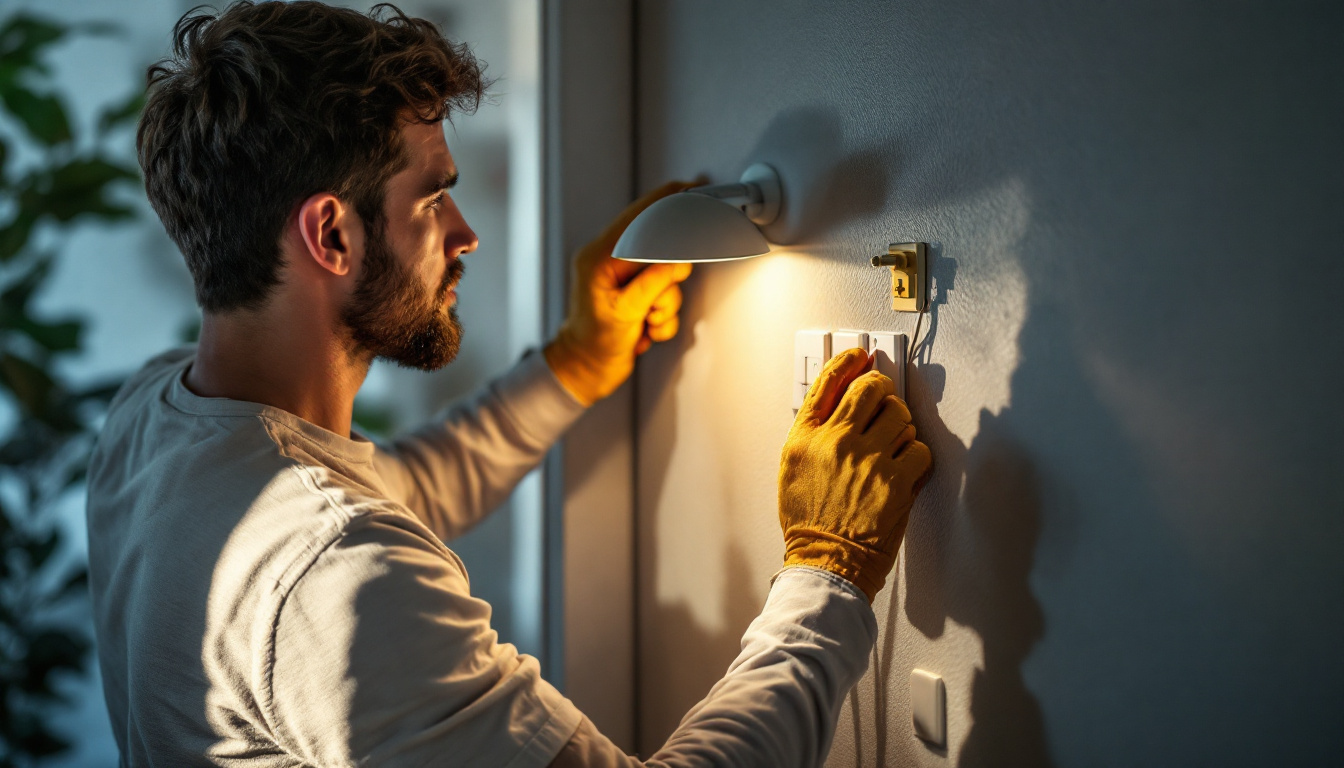
In the ever-evolving world of lighting solutions, LED light strips have emerged as a game-changer for both residential and commercial applications. For lighting contractors, understanding the intricacies of LED technology and its applications can significantly enhance their service offerings and customer satisfaction. This article delves into the benefits, applications, and best practices for utilizing LED light strips effectively.
LED light strips, also known as LED tape or ribbon lights, are flexible circuit boards populated with light-emitting diodes. These strips are available in various lengths, colors, and brightness levels, making them a versatile choice for numerous lighting projects. Their adaptability allows contractors to create unique lighting designs that cater to the specific needs of their clients. The ease of installation and the ability to cut the strips to desired lengths further enhance their appeal, enabling both professionals and DIY enthusiasts to incorporate them into a wide range of applications, from home decor to commercial settings.
There are several types of LED light strips available on the market, each designed for specific applications. The most common types include:
Understanding the differences between these types enables contractors to select the most suitable option for their projects, ensuring client satisfaction and optimal performance. Additionally, some LED strips are designed for specific environments, such as waterproof versions for outdoor use or those with enhanced durability for industrial applications, further expanding the versatility of this lighting solution.
When choosing LED light strips, contractors should consider several key features:
By focusing on these features, lighting contractors can make informed decisions that align with their clients’ needs and preferences. Furthermore, many LED light strips come with advanced features such as dimmability, remote control, and smart home integration, allowing users to customize their lighting experience even further. This technological advancement not only enhances the functionality of the strips but also opens up new avenues for creative lighting design, enabling contractors to offer innovative solutions that stand out in a competitive market.
The versatility of LED light strips opens up a plethora of applications across various sectors. From residential to commercial, these strips can be utilized in numerous innovative ways.
In residential settings, LED light strips can enhance the aesthetic appeal of spaces while providing functional lighting solutions. Common applications include:
These applications not only improve the overall look of a home but also enhance its functionality, making them popular choices among homeowners.
In commercial environments, LED light strips serve a variety of purposes that can significantly impact business operations:
By leveraging LED light strips in commercial settings, contractors can help businesses create inviting atmospheres that resonate with their target audiences.
For lighting contractors, the benefits of incorporating LED light strips into their offerings are numerous. These advantages not only enhance the contractor’s business but also provide significant value to clients.
One of the most compelling reasons to use LED light strips is their energy efficiency. Compared to traditional lighting solutions, LED strips consume significantly less power, leading to lower energy bills for clients. This is particularly appealing for businesses looking to reduce operating costs while maintaining effective lighting solutions.
LED light strips have a longer lifespan than conventional bulbs, often lasting up to 25,000 hours or more. This longevity means less frequent replacements, which translates to lower maintenance costs for clients. Additionally, LED technology is more durable, making these strips resistant to shocks and vibrations, a crucial factor for commercial environments.
The flexibility of LED light strips allows for creative design solutions that can adapt to various spaces and styles. Whether it’s a sleek modern aesthetic or a more traditional look, contractors can customize installations to meet the unique preferences of their clients. This adaptability not only enhances the visual appeal of a project but also showcases the contractor’s expertise in delivering tailored lighting solutions.
To maximize the benefits of LED light strips, contractors should follow best practices during installation. Proper installation ensures optimal performance and longevity of the lighting solution.
Before installation, a thorough planning phase is essential. Contractors should assess the space, determine the desired lighting effects, and create a design that aligns with the client’s vision. This planning phase may involve:
By taking the time to plan, contractors can avoid common pitfalls and ensure a smooth installation process.
When it comes to installing LED light strips, following proper techniques is crucial for achieving the best results:
Adhering to these techniques not only enhances the quality of the installation but also builds trust with clients through professional workmanship.
Once installed, regular maintenance is key to ensuring the longevity of LED light strips. Contractors should advise clients on best practices for care, including:
By providing clients with maintenance tips, contractors can reinforce their commitment to quality service and customer satisfaction.
To maximize success, lighting contractors should effectively market their LED light strip services. A well-thought-out marketing strategy can attract new clients and showcase the contractor’s expertise.
One of the most effective ways to market LED light strip services is by showcasing completed projects. High-quality photographs and detailed descriptions of installations can demonstrate the contractor’s skill and creativity. This portfolio can be shared on websites, social media, and other marketing materials to attract potential clients.
Educating clients about the benefits and applications of LED light strips is another crucial marketing strategy. Hosting workshops, creating informative blog posts, or producing video content can help clients understand how LED solutions can enhance their spaces. By positioning themselves as knowledgeable experts, contractors can build trust and credibility within their communities.
Building relationships with other professionals in the industry can also lead to new opportunities. Networking with interior designers, architects, and builders can create referral partnerships that benefit all parties involved. Collaborating on projects or participating in local trade shows can further enhance visibility and attract new clients.
Incorporating LED light strips into service offerings presents lighting contractors with a unique opportunity to enhance their business and meet the evolving needs of clients. By understanding the technology, applications, and best practices associated with LED light strips, contractors can maximize their success in this competitive market. Through effective marketing strategies and a commitment to quality service, lighting contractors can position themselves as leaders in the industry, ultimately driving growth and profitability.
Ready to elevate your lighting projects and outshine the competition? Choose LumenWholesale for your LED light strip needs and take advantage of our top-quality, spec-grade lighting products at unbeatable wholesale prices. Say goodbye to local distributor markups and hello to superior lighting that meets the highest industry standards. With free shipping on bulk orders, you can stock up on premium lighting solutions without any hidden fees. Make your next project a shining success with the perfect blend of quality, affordability, and convenience. Wholesale Lighting at the Best Value is just a click away.

Discover the essential checklist for lighting contractors focusing on toggle light switches.

Discover how garage recessed lighting can transform your space into a well-lit, functional area.

Explore the essential guide for lighting contractors on electrical switches, covering types, installation tips, safety considerations, and the latest innovations to enhance your projects and ensure efficient lighting solutions..

Discover essential insights and expert tips on construction LED lights tailored for lighting contractors.